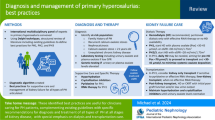Abstract
A 47-year-old Japanese man with mild proteinuria was treated with an ACE inhibitor and antiplatelet agent for 7 years. However, urinary protein levels increased and renal biopsy was performed. Eight out of 20 glomeruli showed global or segmental sclerosis with foamy changes or bubbles, but with a different appearance to typical foam cells or lipoprotein thrombi. “Spike” formation, as observed in membranous nephropathy (MN), was segmentally detected in methenamine silver-stained sections. In an immunofluorescence study, weak linear patterns for IgG and scanty deposits for C3 were observed in glomeruli, but were not specific for immunogenetic MN. An electron microscopy study showed highly dense deposits in the subepithelial, subendothelial, and mesangial areas, in which microbubbles appeared under a higher magnification. Since this case exhibited hypertriglyceridemia and cholesterolemia with high serum apolipoprotein E (apoE) clinically and homozygous apoE2/2 by apoE phenotype and genotype analyses, apoE2 homozygote glomerulopathy was diagnosed and various lipid-lowering agents, e.g., probucol, fenofibrate, and ezetimibe, were administered. However, renal dysfunction gradually developed and peritoneal dialysis was initiated 11 years after the diagnosis. ApoE Toyonaka (Ser197Cys) and homozygous E2/2 were recently identified by direct DNA sequencing. Therefore, non-immune MN-like lesions may develop with the combination of these apoE mutations.



Similar content being viewed by others
References
Dominiczak MH, Caslake MJ. Apolipoproteins: metabolic role and clinical biochemistry applications. Ann Clin Biochem. 2011;48:498–515.
Tudorache IF, Trusca VG, Gafencu AV. Apolipoprotein E—a multifunctional protein with implications in various pathologies as a result of its structural features. Comput Struct Biotechnol J. 2017;15:359–65.
Saito T, Matsunaga A, Oikawa S. Impact of lipoprotein glomerulopathy on the relationship between lipids and renal diseases. Am J Kidney Dis. 2006;47:199–211.
Kawanishi K, Sawada A, Ochi A, Moriyama T, Mitobe M, Mochizuki T, Honda K, Oda H, Nishikawa T, Nitta K. Glomerulopathy with homozygous apolipoprotein E2: a report of three cases and review of the literature. Case Rep Nephrol Urol. 2013;3:128–35.
Fukunaga M, Nagahama K, Aoki M, Shimizu A, Hara s, Matsunaga A, Muso E, Saito T. Membranous nephropathy-like apolipoprotein E deposition disease with apolipoprotein E Toyonaka (Ser197Cys) and a homozygous apolipoprotein E2/2. Case Rep Nephrol Dial. 2018;8:45–55.
Hirashima H, Komiya T, Toriu N, Hara S, Matsunaga A, Saito T, Muso E. A case of nephrotic syndrome showing contemporary presence of apolipoprotein E2 homozygote glomerulopathy and membranous nephropathy-like findings modified by apoE Toyonaka. Clin Nephrol Case Stud. 2018;6:45–51.
Oikawa S, Matsunaga A, Saito T, Sato H, Seki T, Hoshi K, Hayasaka K, Kotake H, Midorikawa H, Sekikawa A, Hara S, Abe K, Toyota T, Jingami H, Nakamura H, Sasaki J. Apolipoprotein E Sendai (arginine 145 → proline): a new variant associated with lipoprotein glomerulopathy. J Am Soc Nephrol. 1997;8:820–3.
Matsunaga A, Sasaki J, Komatsu T, Tsuji E, Moriyama K, Koga T, Arakawa K, Oikawa S, Saito T, Kita T, Doi T. A novel apolipoprotein E mutation, E2 (Arg25Cys), in lipoprotein glomerulopathy. Kidney Int. 1999;56:421–7.
Kodera H, Mizutani Y, Sugiyama S, Miyata T, Ehara T, Matsunaga A, Saito T. A case of lipoprotein glomerulopathy with apoE Chicago and apoE (Glu3Lys) treated with fenofibrate. Case Rep Nephrol Dial. 2017;7:112–20.
Narayanaswami V, Szeto SS, Ryan RO. Lipid association-induced N- and C-terminal domain reorganization in human apolipoprotein E3. J Biol Chem. 2001;276:37853–60.
Masoodi TA, Al Shammari SA, Al-Muammar MN, Alhamdan AA. Screening and evaluation of deleterious SNPs in APOE gene of Alzheimer’s disease. Neurol Res Int. 2012;2012:480609.
Segall ML, Dhanasekaran P, Baldwin F, Anantharamaiah GM, Weisgraber KH, Phillips MC, Lund-Katz S. Influence of apoE domain structure and polymorphism on the kinetics of phospholipid vesicle solubilization. J Lipid Res. 2002;43:1688–700.
Zhang Y, Vasudevan S, Sojitrawala R, Zhao W, Cui C, Xu C, Fan D, Newhouse Y, Balestra R, Jerome WG, Weisgraber K, Li Q, Wang J. A monomeric, biologically active, full-length human apolipoprotein E. Biochemistry. 2007;46:10722–32.
Chen J, Li Q, Wang J. Topology of human apolipoprotein E3 uniquely regulates its diverse biological functions. Proc Natl Acad Sci USA. 2011;108:14813–8.
Mahley RW. Apolipoprotein E: cholesterol transport protein with expanding role in cell biology. Science. 1988;240:622–30.
Sakatsume M, Kadomura M, Sakata I, Imai N, Kondo D, Osawa Y, Shimada H, Ueno M, Miida T, Nishi S, Arakawa M, Gejyo F. Novel glomerular lipoprotein deposits associated with apolipoprotein E2 homozygosity. Kidney Int. 2001;59:1911–8.
Saito T, Matsunaga A, Ito K, Nakashima H. Topics in lipoprotein glomerulopathy: an overview. Clin Exp Nephrol. 2014;18:214–7.
Funding
None.
Author information
Authors and Affiliations
Corresponding author
Ethics declarations
Conflict of interest
None of the authors have any competing interests to declare.
Human rights
This article does not contain any studies with human participants performed by any of the authors.
Informed consent
Written informed consent was obtained from the patient before the commencement of the phenotype and gene analyses of apoE.
Additional information
Publisher’s Note
Springer Nature remains neutral with regard to jurisdictional claims in published maps and institutional affiliations.
About this article
Cite this article
Kato, T., Ushiogi, Y., Yokoyama, H. et al. A case of apolipoprotein E Toyonaka and homozygous apolipoprotein E2/2 showing non-immune membranous nephropathy-like glomerular lesions with foamy changes. CEN Case Rep 8, 106–111 (2019). https://doi.org/10.1007/s13730-019-00380-w
Received:
Accepted:
Published:
Issue Date:
DOI: https://doi.org/10.1007/s13730-019-00380-w




